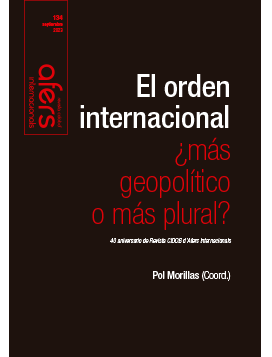Reshuffling of global value chains: United States-China rivalry and the role of the EU
Keywords:
China, United States, split, strategic rivalry, technology, trade, investmentAbstract
Revista CIDOB d’Afers Internacionals, nº 134, p. 51-73
Quadrimestral (May-Setembre 2023)
ISSN:1133-6595 | E-ISSN:2013-035X
DOI: doi.org/10.24241/rcai.2023.134.2.51
The United States and China are locked in a strategic rivalry covering numerous fields, like trade and finance. The most important one, however, is technology. Given how rapidly this rivalry is growing, we can speak of two ever more clearly defined, albeit still interrelated, ecosystems in the areas of semiconductors and artificial intelligence (AI). In turn, global production chains are being reshaped partly on economic grounds, but, without question, for geopolitical reasons too. These changes will not only impact trade flows throughout the world, but also foreign direct investment (FDI), gradually splitting production into two major blocs, based on differing technologies and standards. Where does the European Union (EU) stand in in all this?
>> The full text articles of this issue are available only in Spanish language
Published
Versions
- 2023-10-06 (2)
- 2023-09-29 (1)












